Revealing the tricks of the trade, South African pace great Dale Steyn had no qualms in sharing his knowledge during mid-day's Masterclass session

Dale Steyn during mid-day's Masterclass session held at Smaash, Lower Parel. Pics/Atul Kamble
Dale Steyn is an ideal example of how intense a fast bowler is — pacy run-up, intimidating eyes and pulsating veins. Despite having a reputation of sending batsmen straight into intensive care [ask NZ's Craig Cumming], the Steyn-gun is gentle and grounded off the field.
Revealing trade secrets is never easy, but the South African pace great had no qualms in imparting his knowledge and sharing the tricks of fast bowling during mid-day's maiden Masterclass session held at Smaash in Lower Parel recently. Steyn, who was in the city to promote GoPro cameras, provided wonderful insights during the 45-minute Masterclass session, a unique platform where aspiring athletes can learn nuances of the game from the master.
ADVERTISEMENT

mid-day's Harit N Joshi watches South Africa fast bowler Dale Steyn oblige young fast bowlers with tips during the Masterclass session
mid-day handpicked five young fast bowlers from Mumbai who were eager to emulate the South African. Some had taken special permission to leave their pre-season preparatory camp early, while the others arrived at the venue straight from the gym. The nervousness on their faces was palpable, but all of that vanished as soon as Steyn extended a warm handshake and a broad smile.
Regarded as the greatest fast bowler of this era, Steyn narrated the impact Proteas pace great Shaun Pollock, his idol, had on him. Incidentally, Pollock and Steyn are tied on 421 in the most Test wickets column for South Africa.
It was Pollock who presented Steyn his first pair of bowling boots on his Test debut against England at Port Elizabeth in 2004. "I didn't have any money to be honest; I couldn't afford shoes. I had just two pairs and Shaun basically became my shoe sponsor at least for the first two or three years [of my career]. We had the same shoe size. He was my hero and I thought whatever worked for him, would work for me as well," Steyn recalled.
Steyn's first suggestion to the five aspiring fast bowlers was to develop controlled pace. "If you are bowling at 140, 150 kmph, but it's going all over the place… it's not going to help much," he stressed, before patiently answering questions from Manish Rao (Railways Ranji Trophy player), Mumbai under-23 pacers, Sagar Jadhav and Krutik Hangewadi, Ranji Trophy hopeful Vikas Singh, a left-arm Mumbai pacer, and Jay Kothari, who hopes to get into the Mumbai under-23 team.
Despite limited time, Steyn didn't bother to look at his watch and spent quality time with the fast bowlers. When Rao asked him how to perfect the art of left-arm fast bowling, Steyn told him to bowl a few deliveries so that he could understand him better.
Beyond fast bowling jargon and the technical side, Steyn advised the young guns to be "patient and persistent" because, "fast bowling is really difficult." True, but he didn't make it look very complex — a true reflection of his personality.
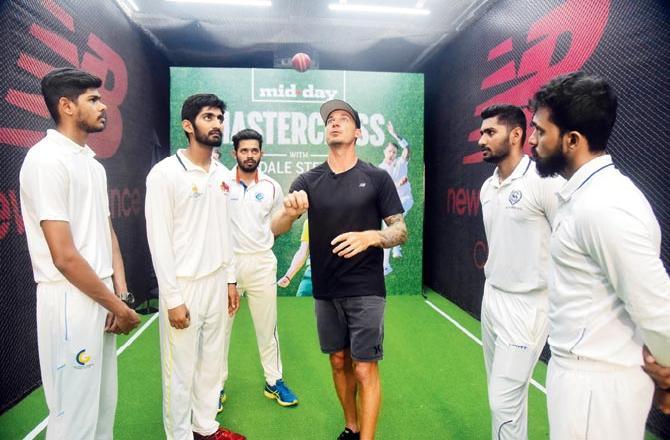
What the young fast bowlers wanted to soak in from Steyn
Sagar Jadhav: How do I fine-tune my run-up?
Your run-up is very important. You don't want it to be too long because you will lose energy by the time you hit the crease. You also don't want the run-up to be too short because you might not have gained a lot of energy. It's an individual thing.
If you look at some of the quicker bowlers — Morne Morkel, Mitchell Johnson — they don't have very long run-ups, but they are extremely powerful at the crease. Then there are guys like Shoaib Akhtar, Brett Lee and myself. We have longer run-ups and we need rhythm to be able to bowl fast. It is not something I can actually teach you, it is more of a feeling you have and you have to work around it. You have to kind of feel when is the right time to jump and release the ball and whether you have enough power, then make that your run-up. It might take a little bit of adjusting.
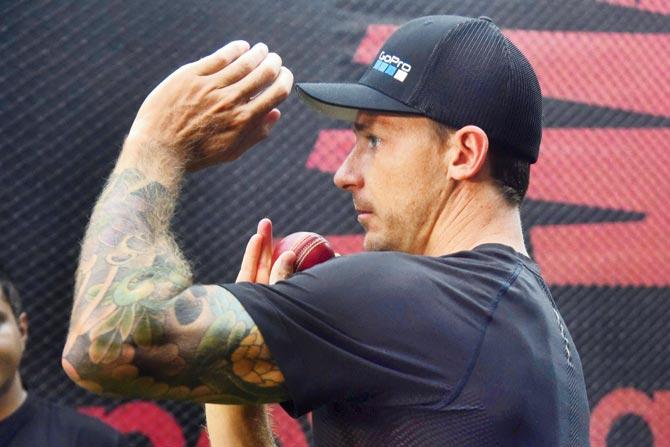
Vikas Singh: How do I better the loading?
There is no set format for this. If you looked at Allan Donald, he would really get his arm quite far back. It just means that the further back you go, you have got to do a lot more work. So, when you are running in, you are keeping your hands in the box. You don't want to be all over the place. When you load, you want to be in this box. It just means that there is control. The moment you start to leave the box, you lose control. Think of a train being on the tracks. If it is going too fast, it starts to lose control. It will derail. It is similar with fast bowling. You are running in and you want to be on track. It is all about your control, pace and momentum.
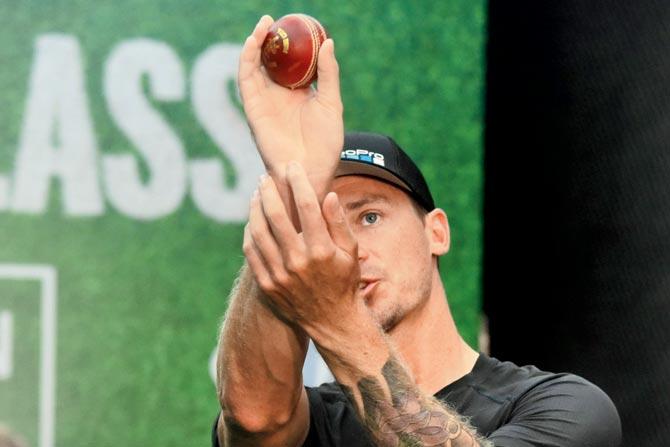
Jay Kothari: What is an ideal wrist position?
The bounce will come from a strong right arm (in the case of a left-arm pacer) for you being high. The moment you drop down, you become skiddy. If you bowl the short ball, it never really gets up and the batsman always has to face the ball. But for you, the swing will be this way, and the wrist will be quite high. I would switch it around; have the seam slightly towards first slip if you are bowling to a right hander. I would slightly open the wrist to allow the ball to naturally drift across. It seems easy, but it is much harder. That's the basic premise. When you start your car, you always put it in first gear. You don't directly put it in the fifth gear and drive away. Fast bowling is quite similar — start from first gear and work your way to the fifth gear.
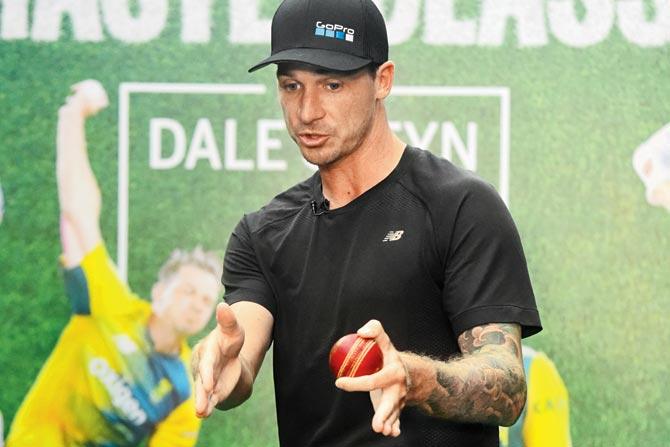
Krutik Hangewadi: How do I make max use of the crease?
If you take a string and put it on the off stump and take it all the way down the pitch, you will see a straight line. Now, leave that string there and move it a bit wider, you will see that the angle has changed, but where you will land the ball will exactly be in the same place. What that does is, mess with the batsman's eyes. He is looking at one point and then he is looking at another point, but the ball is landing in the same place. The angle has changed. To start with, you can use a cone and put it on the crease. When you land, you want to be closer to the cone. And slowly, try to move that cone further and further away. Just by doing that, you can get used to the crease. Find out what is comfortable for you. Sometimes you cannot afford to use the crease due to certain actions. Like my ex-teammate Makhaya Ntini — he used to run-in and jump very wide.

Manish Rao: How important is the left arm?
Your left arm the is key. If you are a right-arm bowler, the left arm is your rider. You lose your left arm, you lose your shoulder. One of the things you might want to do is get a small gym dumbbell, maybe half a kilo or 1kg. Get into the nets and off a short run-up, hold the dumbbell in your left hand, and practice getting your arm up. So, you get used to holding something heavy in your hand. You must try to get it as high as you can. You can release it after the action is completed. That's just a small technique to get used to it. If you practice this 10 to 20 times, you will realise that your arm will just automatically go up because you are used to it.
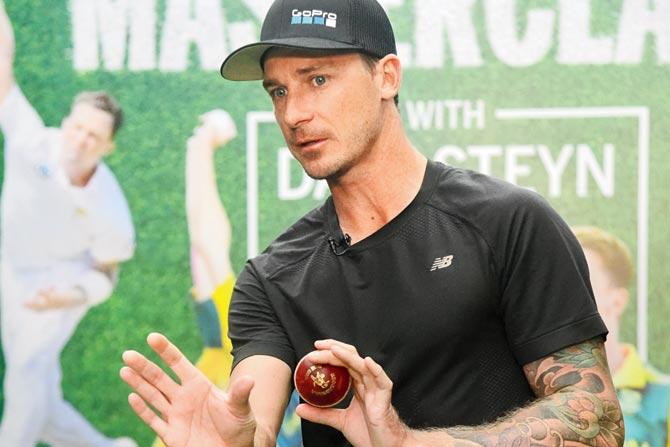
The art of fast bowling
On the dynamics of pace
Controlled pace is most important. If you are running in and bowling 140 or 150 kmph and it's going all over the place, it's not going to help much. Controlled pace is something that batters really struggle with. If you consistently land the ball in the same place, then you are going to cause trouble. Pace is a natural gift. Unfortunately, you have to be born with fast twitch fibres in your body. I look at myself and Faf du Plessis. We are pretty much the same height and same built, but Faf can hardly bowl at 100kmph, while I can touch 150.
Pace is a combination of your run-up, action, speed at which you move at and then comes your wrist position. It depends on the force behind the ball from point A to point B.

On perfecting the leap
When you are running in and gathering, it is all about control. You have a split second in the air to gather everything you have and control everything. You don't want to go too quickly into your action because like a train, you can derail. Your head can fall over and you lose focus on your target. I like to run in and when I gather, I just want to spend a split second longer in my jump to gather.
It's not too high, but in the split second, I just want to get my focal point right, stay focused, keep a strong left arm, good solid landing and head still, which will keep my body from falling over and then have momentum all the way down to the wicket. If you are breaking away, you lose momentum. To stay within the rules, you kind of breakaway a little bit to avoid the danger area. Don't be scared to finish your action because a lot of people want to see where the ball goes. Trust your action that you will let the ball go to the right place.
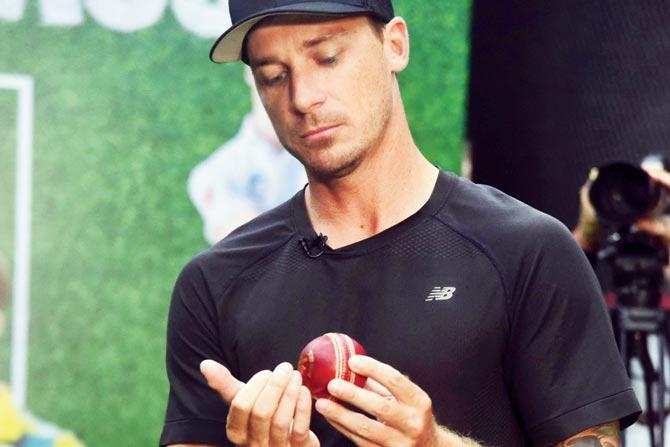
On generating reverse swing
You can't work on the ball legally, so you can't dig your nails or scratch it. You are also not allowed to use sandpaper [laughs]. So, we do things like throwing the ball in foot holes on the pitch and try to scuff up one side. Then we try and look after the one side and make the other side shiny. So, if you get a ball which is conditioned well for reverse swing, you are then winning half the battle.
With reverse swing, the roles actually change. For conventional swing, you take the shiny side outside and the ball would shape away from the shiny side. Now, reverse swing is when you have the shiny side on the inside and the ball shapes towards the shiny side. One of the key things you have to do is that you don't have to change too much. You want to have the shiny side there, but you want to still bowl with the same wrist position. All you have to change is your angle and approach to the pitch while running in. Hit the deck hard and aim at the top of the off stump.
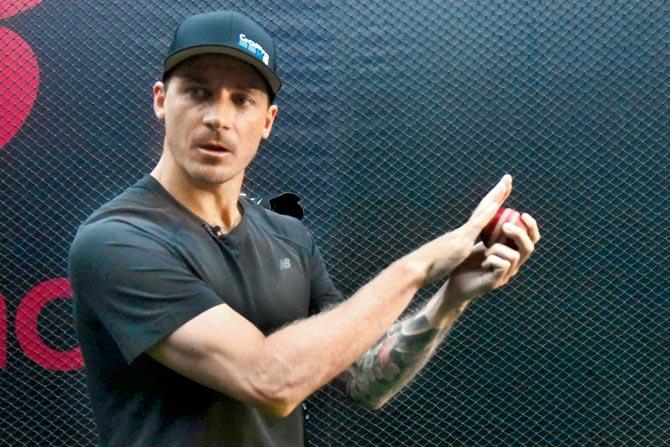
On the art of bowling the outswinger
Everyone is born with some natural gift. Either they shape the ball to move away or shape the ball to move back in. It depends whether you are a left-arm or right-arm bowler. My natural action is the away swing. It is what I was taught when I started playing and it is what I do now. Basically, the trick is to have the shiny side on the outside if you are a right-arm bowler. I like to point the seam slightly towards first slip. As I release the ball, it can stay in that trajectory.
Another small trick is that if this is the part of my wrist that I show the batsman first, then the ball generally comes out quite correctly. I can reverse it the other way if I want to bowl the inswinger. I just have to put the shiny side the other way and I can use that part of my wrist a little bit and the ball will then go that way.
These are small tricks of the trade that you learn. Wasim Akram was brilliant at that. He is probably the king of swing. If you watch him, you will see how well his wrist works.
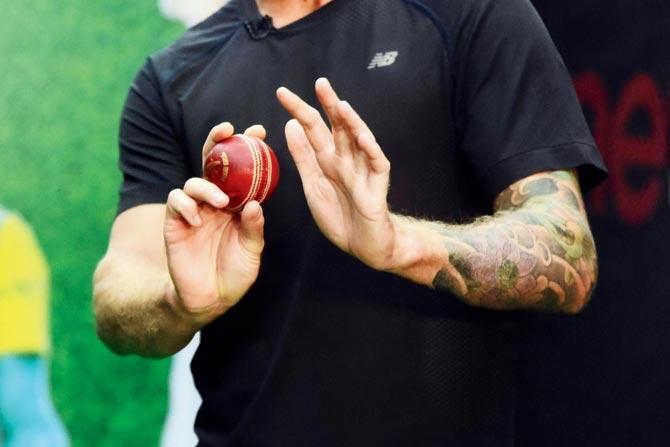
Top tricks that will even fox batsmen who are well set
The cutters
I don't really mind which side the shine is on if I am bowling a cutter. I do like the shine on the outside when I am bowling an in-cutter. It almost looks like you are holding a cross seam. I like to get both my fingers on the seam to get a good grip of it. You just have to let the ball go off the centre of your wrist. You want enough momentum behind the ball. It is a similar process for a leg-cutter.

Slower delivery
You can either bowl with no pace behind it. There is no wrist movement while bowling this. You need a powerful wrist to get real pace. On the other hand, you want no power behind a slower ball as you want to fox the batsman. A big craze now is to hold the ball in the middle, run in and bowl a back-of-the-hand slower ball. If you can do that, it looks like you are bowling a seam ball, but it has actually come out a lot slower.

How to swing it right
You get the shiny side on the outside and hold the ball slightly towards first slip if you are bowling to a right hander. Then, turn it around, the shiny side inside, wrist towards leg slip and you get the inswinger.
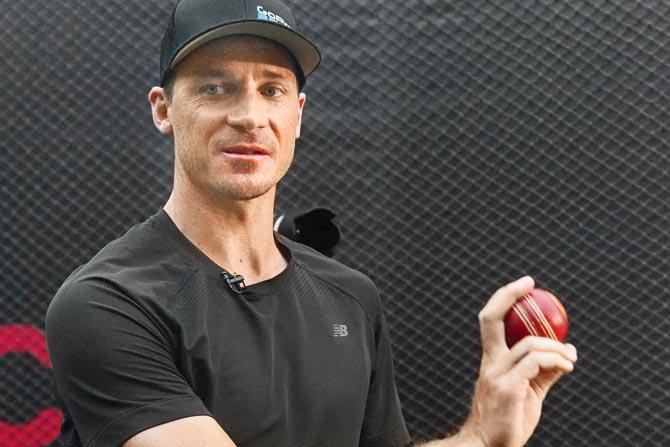
bounce 'em off
Cross seam is always good if you are bowling a bouncer. One hits the shiny side and it skids on. The other one hits the seam and it then bounces off.
Catch up on all the latest sports news and updates here. Also download the new mid-day Android and iOS apps to get latest updates
 Subscribe today by clicking the link and stay updated with the latest news!" Click here!
Subscribe today by clicking the link and stay updated with the latest news!" Click here!







